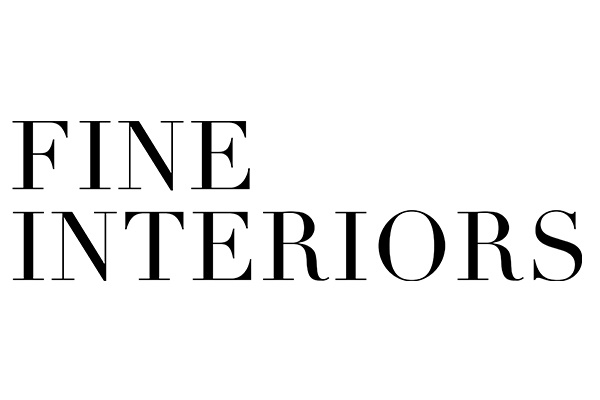

When decorating an interior, the juxtaposition of contrasting elements often leads to the creation of surprisingly captivating and visually striking spaces. For this Fine Interiors sale, two private London collections, disparate in category, yet matched in quality, allowed our team to flex their creative muscles, presenting pieces of fine traditional furniture alongside a considered selection of ethnographic art from Sub-Saharan Africa and Polynesia.
14 August 2023
Ethnographic or Tribal Art - a broad term used for works of art from Africa, Polynesia, Micronesia, Melanesia, Australia, Indonesia and Central and South America - covers works of art and artefacts made by indigenous peoples. Not only is the geographic spread of the category extremely vast, but also the type of item it includes, from Navajo weavings to practical African stools.
True tribal art is always functional, having not been produced for its decorative appeal; the term ‘art’ as we know it was a Western ideology and only something that was introduced to non-European societies during colonial expeditions. The skill of the creator and the aesthetic appearance of the item were important, but superseded by the conceptual power of the object and what it represented to the people who lived with it. They were made to perform specific roles within their communities; when placed in a different context, their incredible aesthetic qualities really shine, but true collectors of tribal art are passionate about both sides of an object, its appearance and its spirit.
As a collecting category, its appreciation has developed over the second half of the 20th century. In the 1960s, Ethnographic Art was rarely seen in antique shops and fairs in the United Kingdom according to the tribal art specialist Gordon Reece (Antique Collecting, June 2017), and in the 1980s, hardly anyone had heard of a kilim or suzani; now they are everywhere, across social media and illustrated in the pages of The World of Interiors and House and Garden. Specialist departments designated to African and Oceanic Art in each of the top-tier auction houses, Sotheby’s, Christie’s and Bonhams, were created in the 1960s and 70s.
A Luba fertility or divination rattle, 20th century, Democratic Republic of Congo (£200-300)
On the other hand, the market for traditional British and Continental furniture, despite always enjoying a strong audience, has experienced a decline over the past few decades for all but the very best examples. Decorators no longer want to reproduce historically accurate Georgian and Regency interiors as they did in the first half of the 20th century, and instead, aim to create spaces that are more representative of the multicultural societies that we live in today. The style and collecting habits of today’s interior decorators have been shaped by their global experiences; overall, the estimated number of international migrants has increased over three times – whether out of choice or necessity – and the homes of today reflect the spread of arts, design and culture that this has enabled. Furthermore, since dealers began to specialise in the aesthetically simple, yet practical objects, from Africa, Asia, South America and Oceania, a new fashion for ‘authenticity’ has been ignited, particularly encouraged by images of homes that incorporate all manner of furniture, textiles, paintings and ceramics from around the globe, throughout the most-revered specialist publications.
However, there is still a place for traditional furniture for those with an eye for quality and craftsmanship, who appreciate the timeless elegance of a well-proportioned George III chest of drawers or the gently curved lines of a Regency side chair, but buying is more considered, and space is reserved for a few well-chosen pieces that will balance with a person’s existing collection.
A George III mahogany chest of drawers by Gillows, c.1790 (£2,000-3,000)
Blending the two categories relies on a democratic approach. There is no hierarchy between the objects themselves, on the contrary, a harmonious flow proves that coherence and balance can be achieved through thoughtful presentation. Leaning into the beautiful simplicity of tribal pieces, these items work best when given space to breathe next to more commanding pieces of traditional furniture. Tribal art looks brilliant in a modern setting, it was one of the key influences for leading avant-garde artists Pablo Picasso and Henri Matisse, and for many years, it has been presented next to modern art and furniture because of the direct correlation between the two.
However, as society’s ideals change so, too, does the way we decorate our homes, and with the embrace of diversity leading the art of modern collecting, the best interiors now encompass a style that celebrates the George III mahogany wine cooler next to the Congolese raffia cloth, without the need to reconcile the difference.
A group of Kuba raffia cloths, of recent manufacture, Democratic Republic of the Congo (£200-300)

fineinteriors@sworder.co.uk | 01279 817778
A remarkable collection of 177 lots of rare and historic Bibles feature in our timed auction of Books, Manuscripts and Maps from 17-27 April, offering collectors, scholars and history enthusiasts a unique opportunity to own some of the most significant early English translations of the Holy Scriptures. The collection showcases centuries-old editions that played a pivotal role in shaping religious thought, language and culture.
15 April 2025
Ahead of his upcoming ‘retirement sale’ on 13–14 May, we caught up with the ever-charismatic Paul Atkinson to uncover some of the captivating stories behind the lots on offer.
11 April 2025
With styles and silhouettes endlessly evolving during the Victorian period, the continuous advancements in fashion offered women more choice and freedom regarding their attire. Sworders are delighted to present a collection of Victorian clothing in our upcoming Jewellery, Designer Handbags & Accessories sale, taking place on Wednesday 23 April.
9 April 2025